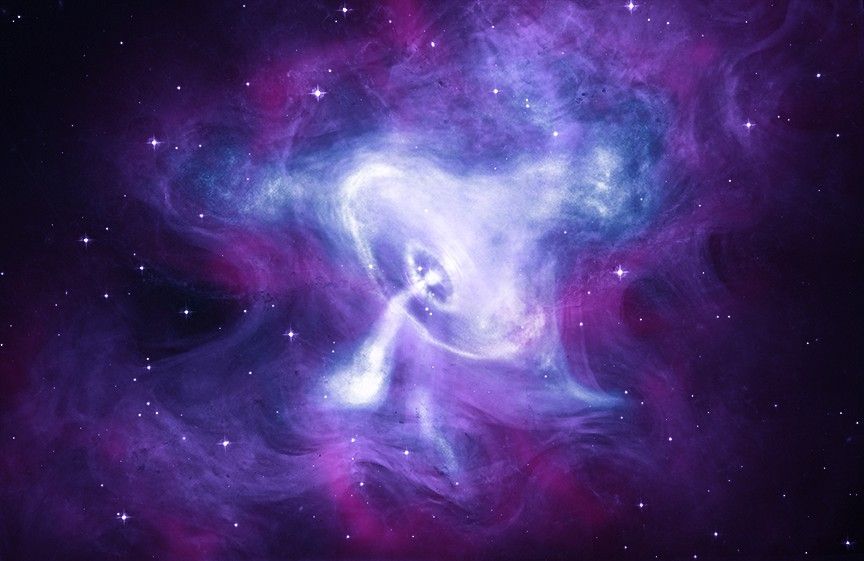NASA Missions Study the Crab Nebula
March 14, 2018
| Credit | X-ray: NASA/CXC/SAO; Optical: NASA/STScI; Infrared: NASA-JPL-Caltech |
|---|---|
| Historical Date | March 14, 2018 |
| Language |
|
This composite image of the Crab Nebula uses data from NASA's Chandra X-ray Observatory (blue and white), Hubble Space Telescope (purple), and Spitzer Space Telescope (pink). The star that exploded to create the Crab Nebula was reportedly first seen from Earth in 1054 A.D. Since its launch in 1999, Chandra has frequently observed the Crab. X-ray observations have helped astronomers better understand this spectacular object.
More information: https://chandra.harvard.edu/photo/2018/crab/




























